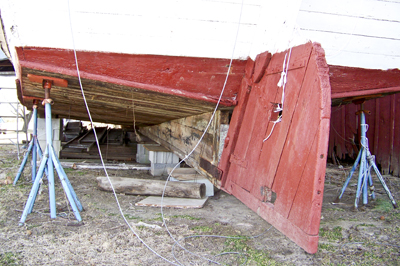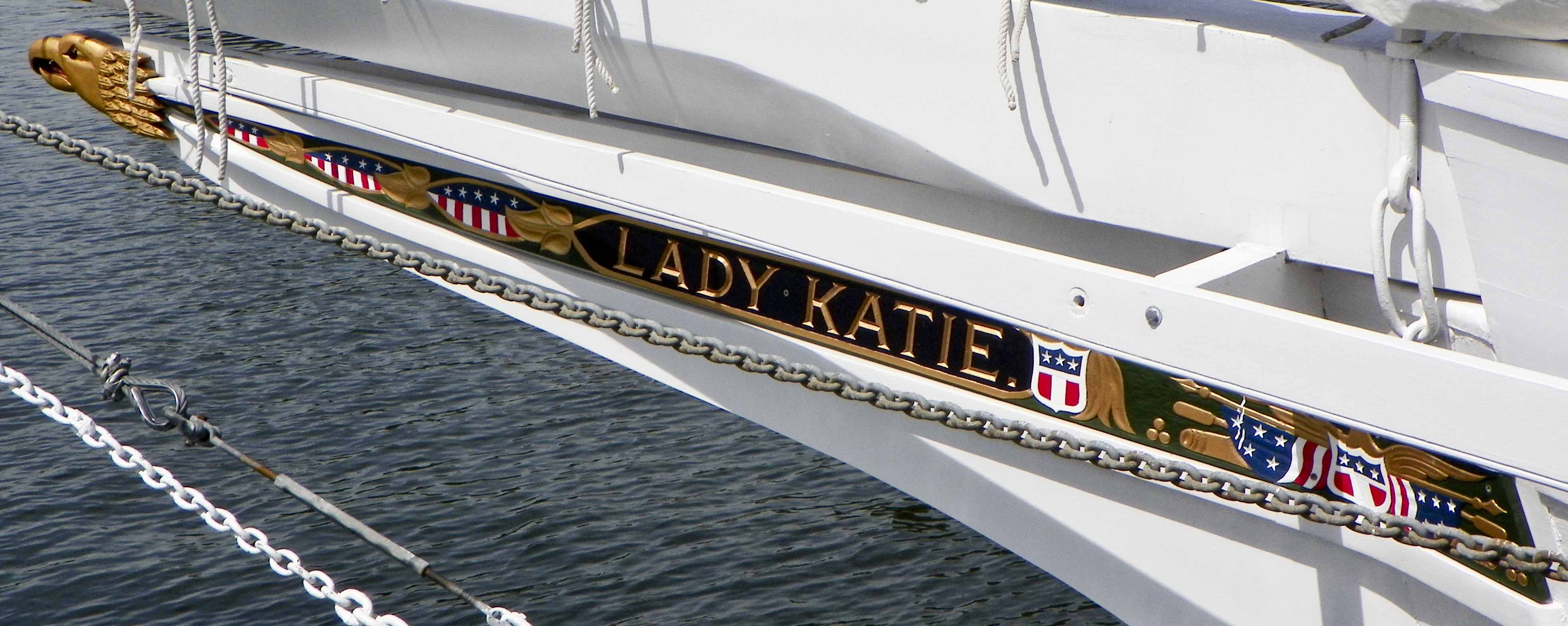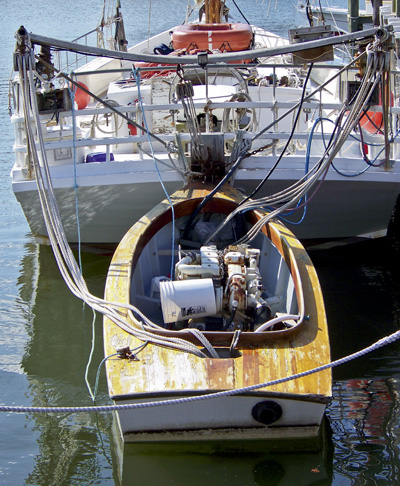About Skipjacks
The skipjack as we know it first appeared in the late 1800s as a shallow-draft, wooden sailing vessel used for oyster dredging.
Oysters were plentiful in the mid-19th century and the Chesapeake Bay hosted fleets of schooners, such as pungys and bugeyes, that harvested them with hand-powered or mechanical dredges. As these deeper-draft vessels exhausted the more accessible oyster beds, skipjacks evolved to exploit the shallower beds that had only been available before to watermen using long-handled tongs from small fishing boats.
Uncertain Origins
Skipjacks probably evolved from crabbing skiffs, similar but smaller single-mast boats with two sails that were used then for dredging blue crabs in the shallow Chesapeake Bay tributaries. However, the design may also have originated in New England, where a similar vessel was being used for oyster dredging, possibly brought to the Chesapeake by Baltimore oyster packing houses.
Even the origin of the name is obscure. Was there once a boat named "Skipjack" and the name adopted for the type of boat? Or was it named after the bonito tuna skipjack, as some suggest? No one knows for sure.
Wherever their origin, the Chesapeake Bay adopted the skipjack as its own, with Maryland even making it the official state boat in 1985.
Powerful, Easier to Sail, Cheaper to Build
They were built for power. The single raked mast is positioned to hold a massive main sail to catch as much wind as possible to drag the heavy dredges across the Bay bottom. The original commercial skipjacks usually were between 30 and 60 feet on deck. The largest could carry as much as 500 bushels of oysters.
They were built for ease of sailing and dredging. With only two sails and the jib self-tending, deck hands could spend more time on hauling and culling oysters and less on tending to the sails. The low freeboard—with the deck closer to the waterline—reduced the effort in hauling full dredges out of the water. The shallow, v-shaped hull means the boat doesn't heel over much in the wind as round-hulled sailboats do, making for a more stable platform for dredging.
A retractable centerboard acts similar to a keel, countering the lateral force of the sails and helping to keep the boat on course. By being retractable, it allows skipjacks to venture into shallower areas. With the centerboard raised all the way, some skipjacks will draw as little as three feet of water, or even less in the smaller boats.

Shows cross-planking, centerboard case,
hard chine and v-shaped hull
They were designed to be less expensive to build. Most were built without plans, using simple ratios, with size often determined by the size of the trees available. The length of the boom should equal the length on deck. The length of the bowsprit should equal the width on deck or "beam." The height of the mast should equal the length on deck plus the beam. The cross-planked, hard-chined hull was cheaper and easier to build than the rounded hulls of schooners and sloops.
They were workboats, but skipjack owners still took pride in them. Their carved, painted and sometimes gilded trailboards bearing the boat's name often were works of art, and many had small carved figureheads tucked under the bowsprit.

While folklore has it that they were built in watermen's backyards, most were built in commercial shipyards that were already building other types of boats on either side of the Bay. But most came from Maryland's Eastern Shore, which still is home to the majority of existing skipjacks.
Help from a Big Engine in a Little Boat
These are sailing vessels, but the wind is notoriously fickle. So skipjacks, which evolved about the same time as the internal combustion engine, used pushboats or yawl boats to help them out. Basically, these are big outboard engines—an automobile engine in a little boat just big enough to keep the engine afloat. They are tucked up into chocks at the stern of the skipjack, pushing it wherever it needs to go.

The pushboats were so efficient in helping the skipjacks harvest oysters, however, that the State of Maryland found it necessary to put limits on their use to keep the oyster beds from being depleted.
At first, no dredging under power was allowed. You could only dredge under sail. The pushboats were allowed to be used to get the skipjacks out to the oyster beds and back to port again, but whenever dredging, they had to be raised up out of the water and hung from the stern in davits. This was so the oyster police could tell that the dredging was being done under sail.
In the 1960s, though, as the oyster harvests diminished, the state eased the regulations, allowing dredging under power two days a week—Mondays and Tuesdays. Which worked out fine if there was good wind the rest of the week.
In the 1990s, the regs were further eased to allow watermen a choice of which two days they would dredge under power. Today, it is a rare sight to see a skipjack dredging under sail. Dredging season for skipjacks runs from November through March.
